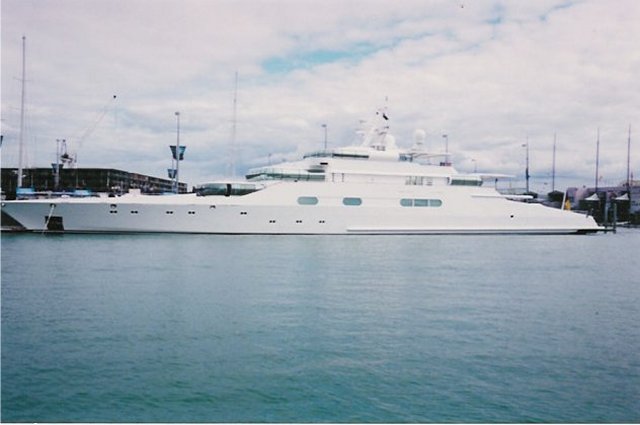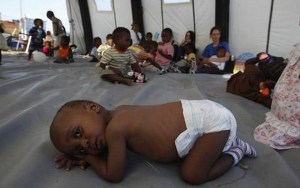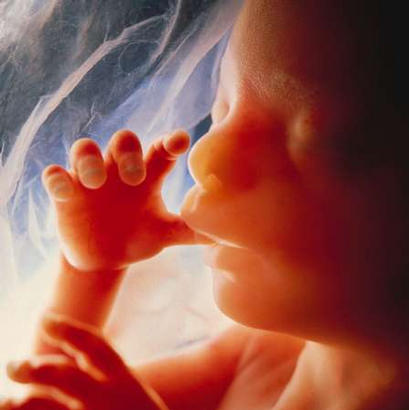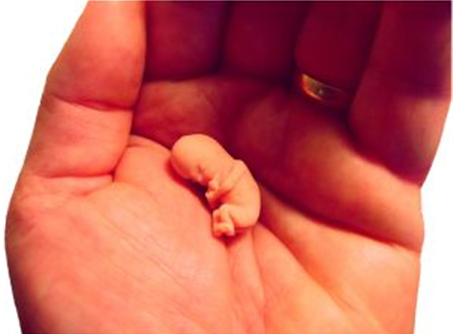(Or how to use the sociological imagination to break the barriers of social stratification & so much more…)
An imbalance between the rich and poor is the oldest and most fatal
ailment of all republics.
— Plutarch
Although Charles Wright Mills consistently studied and produced volumes of material about social stratification & Marxism, he is best remembered in social scientific circles & in the academic world for coining the term “sociological imagination” and his treatise about it (read about the sociological imagination: http://legacy.lclark.edu/~goldman/socimagination.html).
My purpose in writing this post is to reintroduce you to the dilemmas facing mankind, help you see the urgency of each problem and relate global issues to you as an individual.
But hey, let’s face it (and am saying this almost a year after I began writing this post – today is April 6, 2012)… who needs reminding, really?
I have been employed in a major Gulf newspaper in the past five years and I have never failed to make it a point NOT to read the news. Yes, current affairs do not interest me anymore. News on index crimes, local politics, sensational(ized) stories and celebrity gossip have lost their appeal… not because they are any less relevant, not because they do not reflect our time & state, but because I have chosen not to clutter my mind with them.
A self-imposed media blackout if you will.
I have chosen to engross myself in articles regarding the environment and poverty (with the many “evils” that follow).
Ah yes, I am not ignorant of the interrelated-ness of these various elements of life as we know it; I have merely chosen to immerse myself in these concerns and work my way from there.
Your point of view, your concerns, your thoughts & ideas… your life – they have their own place in this world for sure. I hope I find my way into yours just as your life and the many other lives irrevocably intertwined in this tangled web of existence find their way into mine. Who knows? As I sit here in bed typing away, we are already on each other’s way. 🙂
We have to learn to recognize our relationship with the world and understand that each one of us does matter. Our actions are not done in isolation, just as our thoughts are influenced by factors not entirely within ourselves.
In effect, our actions (or inaction) have a ripple effect on everything and everyone else around us. This way of thinking, this attitude may not be agreeable to our hedonistic human tendencies towards living in excess. However, it is when we take control of ourselves after acknowledging this basic truth that we are able to unchain ourselves from the garrison of fear, uncertainty and entrapment that make us recoil at every unexpected turn in our lives… in our existence.
We live in fear because we have built a fortress built on false explanations and false hopes… an artificial world where the rich live in opulence and the poor accept their lot & wait for the next life for some ease, some gratification.
Life is both complex and simple. The intricacies of our existence have been the subject of discussions among philosophers, scientists, religious leaders and scholars… the erudite among us have come & gone, having added to the massive collectivity called “wisdom” leaving some of us still – none the wiser.
When we come to this realization – this recognition that our individual lives are linked, only then can we seek and find change within ourselves – so we can change the course mankind is steering itself towards, to change our fears of impending doom – to see that beside our vices are virtues we can use to take charge of our lives & navigate the present for the future of our planet.
A TRAIN INCIDENT
It takes guts to use the Dubai Metro.
I’ll tell you why… but later, much much later. 🙂
Oh yeah, I’ve seen worse, been to worse – after all, I come from the Philippines… a country usually classified as a 3rd world country by the less politically correct or a developing country by the more politically sensitive. Hogwash! B******t! Does it really make a difference? It all boils down to one thing. We’re poor. I come from a poor country. That’s a fact.
In the morning I rush ahead to catch the 6.45am train from Al Rigga, so that even when I am certain I will be standing for the rest of the 20-odd-minute journey to Business Bay, I’d have a wall to lean on or a handle to hold onto. A later trip would mean less chances of getting a relatively stable and more comfortable place in an impossibly huge throng of commuters.
Some people refuse to budge as you try to get out; if you push past them, be prepared for the dagger looks that will be cast your way as you get out of the train as fast as you possibly could. If you’re one of those reticent souls who couldn’t shout “help!” even while being robbed, be prepared to leave at the stop after yours or the one after or the one after that. 🙂
One particular morning, a tall Caucasian lady (possibly from the former USSR– I noticed via her heavily accented English) got on at the Khalid Bin Al Waleed station. Now there was still room for her farther inside the train in the ladies section, but wonder of wonders! She stood there, towering at the section entrance, refusing to budge whenever the doors slid open and people had to exit or come in. I heard her loudly saying, as someone said “excuse me” and pushed past her: “Why you not come near the door when you know you’re going away?!?” I didn’t see the hapless soul she was referring to when we were already at the World Trade Centre station. She looked around her, looking over our lower Asian heads, gazing around as if to check if anyone would dare defy her. Her nose was wrinkled in disdain.
I wasn’t sure if anyone standing beside her actually smelled bad, but at that moment in time, she was the one who stank very badly.
Well you can probably say it was all in my head. Nasty thoughts. But I looked around me and saw some women shrugging their shoulders or discreetly shaking their heads in dismay. Even the people near her started to inch away. I looked straight at her from my corner and watched her every move. She fumbled for something in her big bag and put her huge sunglasses on. I kept my gaze steady even as she looked around again.
I was determined to bump at her when it was my turn to leave. There was one other Filipina who always got off where I did. She was about 5’6” and big. I was thinking about what she planned on doing.
Finally, my stop. The big Filipina girl bumped into her, mumbling “excuse me,” ignoring whatever foul words escaped the woman’s lips. I quickly noted she had three rolled up yoga mats on the floor right next to her. I bumped into her and glared at her briefly and left. I did not say “excuse me” or “sorry.”
Oh yeah, I would stoop so low, dear me… hahaha! I am not one to go quietly when provoked.
I was thinking, yoga? with that kind of attitude? If she didn’t want to be in a crowd with the “lowly” Asians (from whom, by virtue of the Indians, yoga originated by the way!), she could’ve taken a cab!
Sigh. Dear me, my friend in the office said my ears were quite red when I got there – 15 minutes after getting off the metro.
ARMAGEDDON OR PEOPLE LIVING ON THE EDGE?
Today, Saturday at 1420hrs (UAE time), I took the metro as usual.
Today, May 21, 2011, at 1800hrs (RP time), they said the world would end (c/o Harold Camping)… but it hasn’t.
Not that I looked forward to it. When asked last week about it, I just said, I am ready to die any time… whether on my own or with the rest of the world. My only disappointment would be, if the end came for everyone, if I died away from my family – especially my children. My inadequacy as a mother should end there. I should be there to comfort them if it happens in this lifetime.
Anyway, so the ills of the world continue as I write this post.
As I walked from the metro under the C 41º heat, I was thinking – all’s clear. I have yet to write this post that I have been itching to write weeks & weeks ago.
Life is not fair. Fact.
We are born into families we did not choose to be born into. Hell, we don’t even get to choose our parents! Your mom and dad can be the worst slobs on earth and there is nothing you can do about it. So whether or not you believe in fate is beside the point… the exact point in the beginning of our existence is a matter that is beyond our control.
So we look to the world of ideas and mankind, genius and ideals… philosophies and systems that have been brought to life by the brilliance of human minds – those who have decided to think for themselves and beyond themselves… studied good & evil, darkness and light, water, air, earth, fire… all for the sake of study or with secret hopes of enlightenment & change.
I do not pretend to be any more profound than you or the Average Joe standing next to you. I do enjoy reading about the latest gossip on some Hollywood stars I know of and British royalty & the royal messes they tend to make 🙂 … but, well, I always end up wondering how one earth have humans become so superfluous & superficial?
Take poor little Suri for example. The child is blameless… but for her parents to suit her up and encourage her every whim & fancy is a tad foolish and very reckless. Salvatore Ferragamo? Louis Vuitton? Come on!?! I pity her. I pity them.
For surely the smallest population at the tip of the social iceberg scarcely has any idea of how the people in the languishing bottom, the very foundation of the iceberg… continue to agonize over where they will get their next drink of clean water and a decent meal.
OR. Or if some of the extremely affluent members of the society are aware of the plight of the poor, many still view their lifestyle of privilege as a birthright or reward… something they also have had no choice in. Others, like celebrities & entrepreneurs who have risen from the middle income or even the low income segment of the population may consider their newfound fortune as just deserts for their hard work, talent and innovation.
Ostentatious living has become a fad among the rich and extremely wealthy. Dinners in the most upscale restaurants, owning the most expensive pair of shoes, possession of an island or islands, yachts, private jets, cars, jewelry, couture; nothing but the best (or what seems to be the best).
(Let your pointer hover over the image to get the file name / description of the photo :-))
(Read more about unnecessary but expensive stuff: http://www.oddee.com/item_88021.aspx)
Still, it would be so great if they’d care for others a bit. Just a little… the way a few of them do.
Most societies continue to be mired in poverty. Another fact.
The thing is, while scholars have devoted hundreds of years of study trying to explain this widespread social problem, poverty remains and continues to worsen. Various organizations have been established to help alleviate the plight of the poor but nothing seems to work for the longer term.
What makes it worse is that poverty in itself is the source of other social ills, as the rich take advantage of the poor… or the slightly better off poor takes advantage of the poorer or the poorest of the poor, and vice versa.
Economic disadvantage is not, in itself, an obstacle to achievement. However, people’s lack of economic resources can and does produce a string of other problems that may arise within a lifetime and linger (& worsen) through several generations.
Hunger, Undernourishment, Malnutrition & Obesity
Consider the following:
Over 9 million people die worldwide each year because of hunger and malnutrition. 5 million are children.

Approximately 1.2 billion people suffer from hunger (deficiency of calories and protein).
Some 2 to 3.5 billion people have micronutrient deficiency (deficiency of vitamins and minerals).
Yet, some 1.2 billion suffer from obesity (excess of fats and salt, often accompanied by deficiency of vitamins and minerals).
Food wastage is also high:
- In the United Kingdom, “a shocking 30-40% of all food is never eaten;”
- In the last decade the amount of food British people threw into the bin went up by 15%;
- Overall, £20 billion (approximately $38 billion US dollars) worth of food is thrown away, every year.
- In the US, 40-50% of all food ready for harvest never gets eaten
- Of the food that does eventually reach households, some 14% is wasted, resulting in something like $43 billion of wastage
- If food reaching supermarkets, restaurants and cafeterias is added to the household figure, that wastage goes up to 27%.
- In Sweden, families with small children throw out about a quarter of the food they buy

In some parts of Africa, a quarter or more of the crops go bad before they can be eaten. More generally, high losses in developing nations are mainly due to a lack of technology and infrastructure as well as insect infestations, microbial growth, damage and high temperatures and humidity.
- The impact of this waste is not just financial. Environmentally, this leads to:
- Wasteful use of chemicals such as fertilizers and pesticides;
- More fuel used for transportation;
- More rotting food, creating more methane — one of the most harmful greenhouse gases that contributes to climate change.
- Reducing wastage in the US by half could reduce adverse environmental impact by 25 percent through reduced landfill use, soil depletion and applications of fertilizers, pesticides and herbicides.
The direct medical cost of hunger and malnutrition is estimated at $30 billion each year.
Data Source: http://www.globalissues.org/article/7/causes-of-hunger-are-related-to-poverty
High Infant / Child Mortality
The effects of poverty on infants and children are far-reaching, fatal, deplorable… stark. A child born into an affluent family is almost a hundred per cent certain of wanting for nothing, whereas a child borne under the most difficult circumstances is lucky to be born at all.
Based on the findings of the WHO (May 2010 report with figures collected for the year 2008), the country with the largest number of neonatal deaths (0-27 days) by all studied causes (diarrheal diseases, tetanus, pneumonia, preterm birth complications, birth asphyxia, neonatal sepsis, congenital abnormalities & other causes of neonatal deaths) is India with 1,003,767 neonatal fatalities in 2008. China has, by comparison, 205,710.
The countries with the lowest rates of neonatal deaths include: Seychelles (9), Andorra (1), Iceland(6), Luxembourg (5), Monaco (1), Tuvalu (3), Fiji (3), Niue (1). However, apart from Iceland & Luxembourg, the countries with the lowest neonatal death rates are very small and less populated nations.
Globally, the total of neonatal deaths for 2008 caused by (any of) the aforementioned factors was 3,575,053.
When it comes to the death rate for children in the age group of 1-59 months, India still heads the list at 826,060, followed by Nigeria (778,459) and the Democratic Republic of Congo (390,839). The world total number of deaths for the year 2008 for this age group is 5,220,296.
The third class of available data is for the death of children under 5 (<5) years of age from identified causes (diarrheal diseases, pertussis, neonatal tetanus, measles, meningitis, malaria, pneumonia, other infections, preterm birth complications, birth asphyxia, neonatal sepsis, congenital abnormalities, other non-communicable diseases & injuries). By country, the ranking from the highest number of deaths for 2008 is as follows: India (1,829,826), Nigeria (1,076,613), Democratic Republic of Congo (553,529), Pakistan (464,886), China (369,289) and Afghanistan (310,739). The global total number of children in this category who died in 2008 from the identified causes previously mentioned is 8,795,349.
In sum, considering all three age ranges for children (only till those below five years of age), the global total number of deaths in 2008 add up to 17,590,698. This astounding number does not include undocumented deaths from the same or similar causes, abuse, neglect, natural disasters, war and hunger.
For more info, go to: http://www.who.int/healthinfo/statistics/mortality_child_cause/en/index.html
Abortion
Abortion has always been a contentious issue and remains to be so; voices from both sides of the issue – the pro-life and pro-choice defenders – continue to be heard, building websites, publishing research, lobbying and circulating materials to support their cause.
But for most women in poverty-stricken communities, opting for abortion is not really so – meaning these women sometimes feel powerless, incapable of seeing anything other than the most immediate solution to their pressing problem… so the word “opting” does not really apply. No matter how unsafe, unsanitary and dangerous the conditions may be, or even if it goes against their community’s moral code and laws… some women do go through the horrendous physical pain of terminating the life of their unborn child. Oft have we heard of a woman saying she’d rather not have her baby than bring it out into a world of torment, hunger, disease, uncertainty and despair. Thoroughly unprepared for the physical pain, emotional anguish and moral scarring… the woman who goes through abortion does so in hiding, guiltily skulking in the shadows – on one hand defiant in saying society and life have given her no choice; on the other hand secretly branded in her uterus and in her soul for the guilt & shame her act has brought upon her.
Statistics on abortion are incomplete and unreliable since a great number of abortions occurring in countries where abortion is illegal remain unreported & undocumented.
Reports from countries where abortion is legal, e.g. US, Canada, Australia, Cuba, Norway, Italy, China, North Korea, etc., are intermittent and/or irregular. Among them, Greenland has the highest percentage of documented abortions (based on the total known pregnancies for the year covered in the report) with 51.1% in the year 2007.
This figure is not a good basis for concluding that Greenland must have the largest number of abortions worldwide since not all countries submitted data for the same year, and not all countries participated in giving a report; not to mention the fact that no such report has been given in countries where abortion is not allowed except in case of medical abortion where the life of the mother is threatened (e.g. ectopic pregnancies).
Based on the “Summary of Registered Abortions through April 2010” collected, analyzed and presented in the website of Wm. Robert Johnston. Since the amount of data is varied and comprehensive, for this blog post, I have decided to include the following items which may also be of interest to you.
Please click on the Abortion Table to see the data I am talking about here. My apologies for this inconvenience, I have not yet mastered HTML so I converted my bitmap file into Adobe PDF just so I can insert the link in my blog.
My basis for the groupings is the similarity in the years covered although the range may not be exactly consistent in all cases. Some noteworthy details about Group Ainclude the following:
• PR China in the years 1971-2007 has a total number of 307,252,167 reported abortions. It must be noted thatChina’s “One Child Policy” is a major factor in the huge number of abortions done. An estimated additional 17,809,257 abortions have been done in PR China till April 2010
• In Group A, India is the only country where abortion is illegal, with the following stats: for 1972-2004, a reported 17,143,717 total abortions were done, with an estimated additional 3,437,749 till April 2010
• Vietnam, within a shorter span of time (1976-2000) has reported a total of 11,713,366 abortions, with an additional estimate of 6,421,604 abortions till April 2010
For Group B, I have noted the following distinctions:
• Bangladesh, for the year 2000 alone, has had a total reported 119,600 abortions with an estimated additional 1,116,266 done till April 2010. Abortion is illegal in this country
• Ukraine, even after considering the one year difference in coverage with other countries in this group, has the biggest number of reported abortions (within the years 1992-2008) numbering up to 8,238,842
• All countries in Group B have legal abortion, with some taking a selective or case-to-case stance
Regarding the third group, i.e. Group C – which comprises the former USSR and USA, the following details have been noted:
• From 1922-1991, the former Soviet Union had a total of 282,429,483 reported abortions (there is no more data after that since the dissolution of the Soviet bloc)
• The USA on the other hand, has a total of 47,638,390 abortions in the years 1926-2004, with an additional estimated 4,662,666 number of abortions till April 2010
For Group D, I have included the following noteworthy details:
• In spite of the approximately 30-year gap between Iceland and other countries in Group D relative to the starting point of the abortion data, Iceland still has the lowest estimated number of additional abortions till April 2010: 1,273 and the lowest latest annual abortion figure: 955
• Abortion is legal in all countries in Group D
To illustrate the relatively low abortion rates in these countries, I have taken the liberty of presenting the data for Group D in this manner (please click on Group D Table).
The world total number of reported abortions from 1922-2009 is 862,695,400, while the estimated current global monthly average is 1,237,000 abortions. The world total does not take into account what may be a substantial number of abortions done illegally, or quietly – in secret in countries where abortion may or may not be legal. However, one may safely conclude that the incidence of underreporting would be greater in countries where abortion has legal sanctions.
Abortion Data: http://www.johnstonsarchive.net/policy/abortion/index.html
© Lovely Claire Dangalan, 2011



















